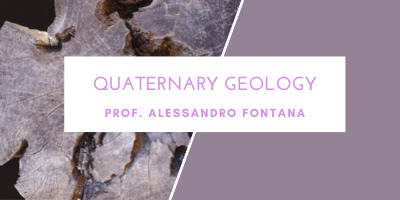Quaternary Geology

Period: first semester
Course Unit Contents: The course is divided into several main themes:
- Theory and methods of Quaternary Geology.
- Allostratigraphy and Unconfromity Bounded Stratigraphic Units (UBSU); stratigraphic and cartographic criteria for the detection of the new geological map of Italy (CARG Project).
- Recognition, characterization and detailed mapping of glacial, alluvial and slope deposits.
- Evolution of Italy and neighboring areas during the Quaternary period.
- Use of georeferenced databases and their management within CARG and for the cartographic production.
- Use of Software and cartographic editing.
- Survey, processing and mapping of information useful for the production of documents related to territorial planning such as Regional Planning Plans, Hydrogeological Planning Plans (PAI) and Environmental Impact Assessment (VIA in Italy).
- Principles, techniques and instrumentation of the survey of Quaternary deposits in marine platforms for application purposes.
Planned learning activities and teaching methods: The course consists of lectures, fieldwork and classroom exercises.
FIELDWORK: During the course 3 days of fieldwork are planned, corresponding to one fieldtrip of 2 days between the end-moraine system of the Tagliamento glacier and the western sector of the Friulian Plain for training in the survey of glacial, alluvial and colluvial deposits; another 1-day fieldtrip is planned in the Alpine environments (probably in the Alpago area) for surveying slope, glacial and paraglacial deposits.
Also exercises in the computer lab are planned, with the use of the GIS software (QGis, ArcMap) and the Adobe Illustrator software, with the aim of creating the digital representation of the geological cartography and learn the fundamental operations to arrive at the preparation of a map prepared with the symbologies and the specific graphics required in the typical professional works and in the surveys of the national geological map of Italy (CARG project).
The lectures and, when possible also the exercitations in aula, are also available online through the Zoom platform for the students that can't be physically present in Padua because of problems related to emission of international visa or other bureaucratic issues. Also the students that attend lectures on-line have the possibilty to make questions and interact with teh teacher during the lectures.
In addition to contacting the course instructor, students with disabilities, Specific Learning Disorders (SLD), Special Educational Needs (SEN), and other health conditions can reach out to the Student Services Office - Inclusion Unit to receive more information about opportunities to access teaching with specific support and tools.
